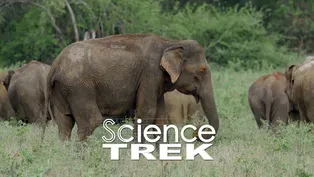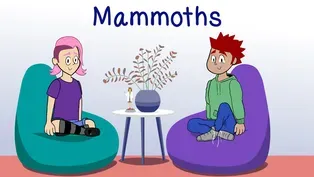
Mammoths: Fossils Forming
Clip: Special | 1m 4sVideo has Closed Captions
What is a fossil?
How does a fossil form? Learn the processes involved in creating the fossil record.
Problems with Closed Captions? Closed Captioning Feedback
Problems with Closed Captions? Closed Captioning Feedback
Science Trek is a local public television program presented by IdahoPTV
Major Funding by the Laura Moore Cunningham Foundation and the Idaho National Laboratory. Additional Funding by the Friends of Idaho Public Television and the Corporation for Public Broadcasting.

Mammoths: Fossils Forming
Clip: Special | 1m 4sVideo has Closed Captions
How does a fossil form? Learn the processes involved in creating the fossil record.
Problems with Closed Captions? Closed Captioning Feedback
How to Watch Science Trek
Science Trek is available to stream on pbs.org and the free PBS App, available on iPhone, Apple TV, Android TV, Android smartphones, Amazon Fire TV, Amazon Fire Tablet, Roku, Samsung Smart TV, and Vizio.
Buy Now

Science Trek
Science Trek is a place where parents, kids, and educators can watch short, educational videos on a variety of science topics. Every Monday Science Trek releases a new video that introduces children to math, science, technology, engineering, and math (STEM) career potentials in a fun, informative way.(Science Trek music) JOAN CARTAN-HANSEN, HOST: How do fossils form?
First, a living thing has to die, perhaps drowning in a lake.
The body sinks to the bottom and the soft parts like tissue and skin decompose.
That leaves behind the hard skeleton.
Over time, the skeleton is covered by mud and sand.
As the skeleton is buried, the minerals in the water enter through the pores of the bone and turn it into stone.
Layers of sediment build up over time.
And eventually, the sediment is compressed into solid rock.
Some time later, the movement of the Earth's crust eventually brings the rock to the surface.
Wind and water wear away the rock layers, sometimes exposing the fossil.
Or paleontologists dig though the rock layers to find them.
It takes just the right circumstances to make a fossil.
But knowing where fossils were found, under what conditions, and how long ago helps create a fossil record and this fossil record helps us better understand the creatures that lived long ago.
For more information about mammoths, check out the Science Trek website.
You'll find it at science trek dot org.
Providing Support for PBS.org
Learn Moreabout PBS online sponsorshipSupport for PBS provided by:
Science Trek is a local public television program presented by IdahoPTV
Major Funding by the Laura Moore Cunningham Foundation and the Idaho National Laboratory. Additional Funding by the Friends of Idaho Public Television and the Corporation for Public Broadcasting.













